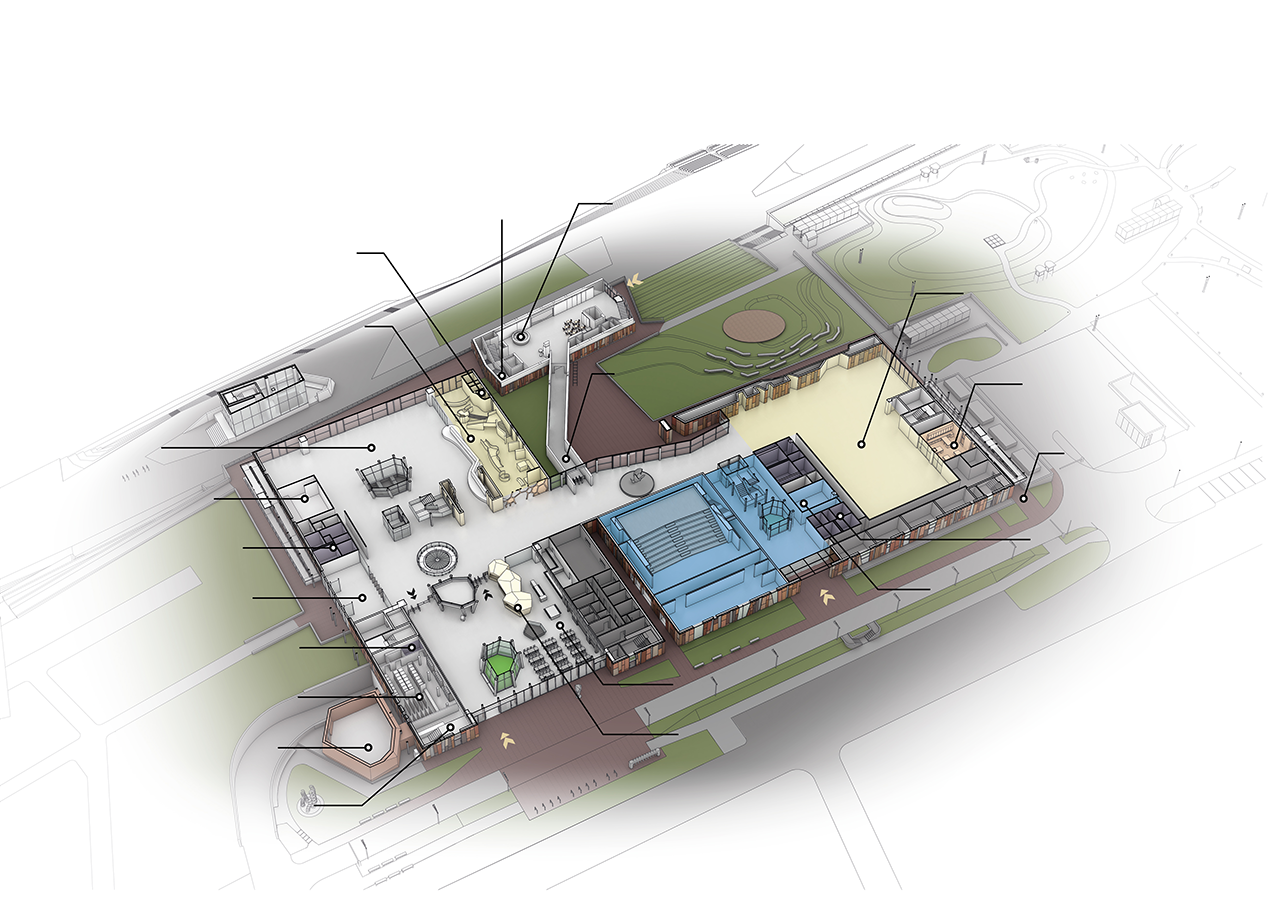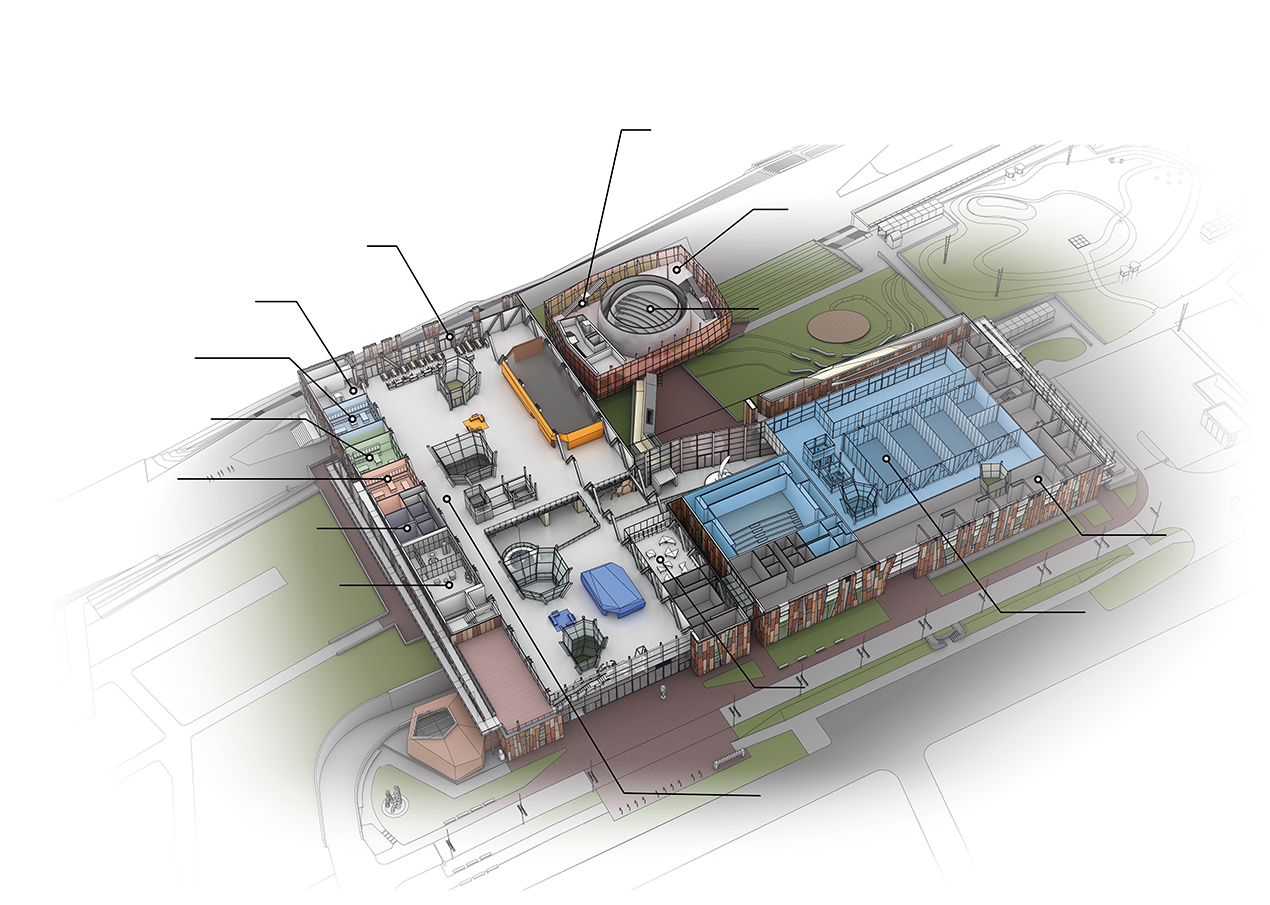During the event we will get to know the LunAres Research Station and the multinational crew of the Orpheus mission.
The LunAres team created an environment that resembles a base on the moon or on Mars and helps scientists, from all over the world, to take part in simulations of exploring a new frontier. A simulated space base is a place where developing sustainable technologies that provide life support systems for long-term human missions and medical experiments allowing for the study of human factors in space. Such space is called an ‘analog habitat’. The LunAres Research Station conducts complicated scientific campaigns that operate on several levels: A two-week isolation mission with a multidisciplinary crew of three men and three women to tend the station , prepare biological and engineering experiments and perform very demanding spacewalks. At the same time the participants are observed and studied by medical, psychological and sociological researchers. The analog habitats research helps scientists prepare procedures and responses for many scenarios that could occur during the actual Moon mission - it’s simply safer to test these scenarios here on Earth.
During Orpheus, six analog astronauts took part in a 2 week isolation mission at the LunAres habitat, simulating a mission to the Moon. One analog astronaut participated in the mission remotely. The team had 14 research experiments and tasks to perform. Orpheus was a part of the Pandemic Isolation Campaign under the patronage of the Polish Ministry of Health, the goal of which is to identify the potential health impacts of a two week quarantine. The research conducted with several universities and partners will not only help improve space exploration but also will support the general public’s challenges in times of social distancing. The crew members focused on their projects and research during a two-week stay on the “Moon” located at a former military airport in Piła, Poland.
Transmission
During the meeting, we will talk with part of the crew of the Orpheus Mission and find out why the Moon is the destination of human space flights.
Event program:
- 18:00 – 18:15
- event opening
- 18:15 – 18:30
- Lunares – analog habitat
- 18:30 – 18:45
- Planetarium show „Lunar history”
- 18:45 – 19:35
- interview with crew of the Orpheus Mission
- 19:35 – 19:55
- film journey to the Orpheus Mission and Q&A
- 19:55 – 20:00
- event ending
Mission crew
Dr. Benjamin Pothier – French scientist, PhD (international research program of the Planetary Collegium, Plymouth University, UK). An elected fellow international of the Explorers Club (NYC) and an expert for the Human Spaceflight Committee of the International Astronautical Federation, he was previously a selected member of the 2018-2019 Euromoonmars campaign of the European Space Agency and ILEWG (International Lunar Exploration Working Group) in order to help future missions to the Moon. Through his participation in expeditions on remote locations and analog astronaut training worldwide, Mr Pothier specializes in Life experiences in I.C.E [Isolated, Confined and Extreme] environments and their studies.
Dr. Shawna Pandya – Canadian scientist, physician, speaker, martial artist, citizen-scientist astronaut candidate with Projects PoSSUM & PHEnOM, and prime crew aquanaut with Project Poseidon. Through her involvement with Project PoSSUM, Dr. Pandya was part of the first crew to test a commercial spacesuit in micro-gravity. She has also completed centrifuge studies, emergency spacecraft egress and sea survival training, and wilderness medicine training. She also currently serves at the Life Sciences Team Lead for Association of Spaceflight Professionals and the Life Sciences Chair for the Canadian Space Society. Dr. Pandya holds degrees in Honors Neuroscience (BSc. Hons, University of Alberta), Space Studies (MSc., International Space University) and medicine (MD, University of Alberta).
Eduardo Salazar Perez – Mexican engineer, student in the last year of Mechatronics Engineering at the National Autonomous University of Mexico. His first experience in the development of space technology was when he took part in the team CanSat Siqueiros, for the development of CanSats for the Annual CanSat Contest, held every year in the United States. Currently he is a collaborator at the Laboratory of Space Instrumentation of the Institute of Nuclear Sciences where he is part of the team that develops stratospheric and space technology.
Ola Kozawska – Polish engineer, service and strategy designer with experience using design tools and human-centred methods in a variety of industries. She led the design and digital transformation within companies such as Sopra Steria, Fjord and BBVA. Her design education includes UCL, Politecnico di Milano, and The Glasgow School of Art. Aleksandra also has experience working at the European Astronaut Centre as a designer of basic astronaut training materials and an e-learning course for technical experts. She is an alumna of the International Space University, SPP19 where she co-led the "Space for Urban Planning" team project. She is also a member of the SGAC Space Exploration Project Group and Polish Space Professionals Association.



